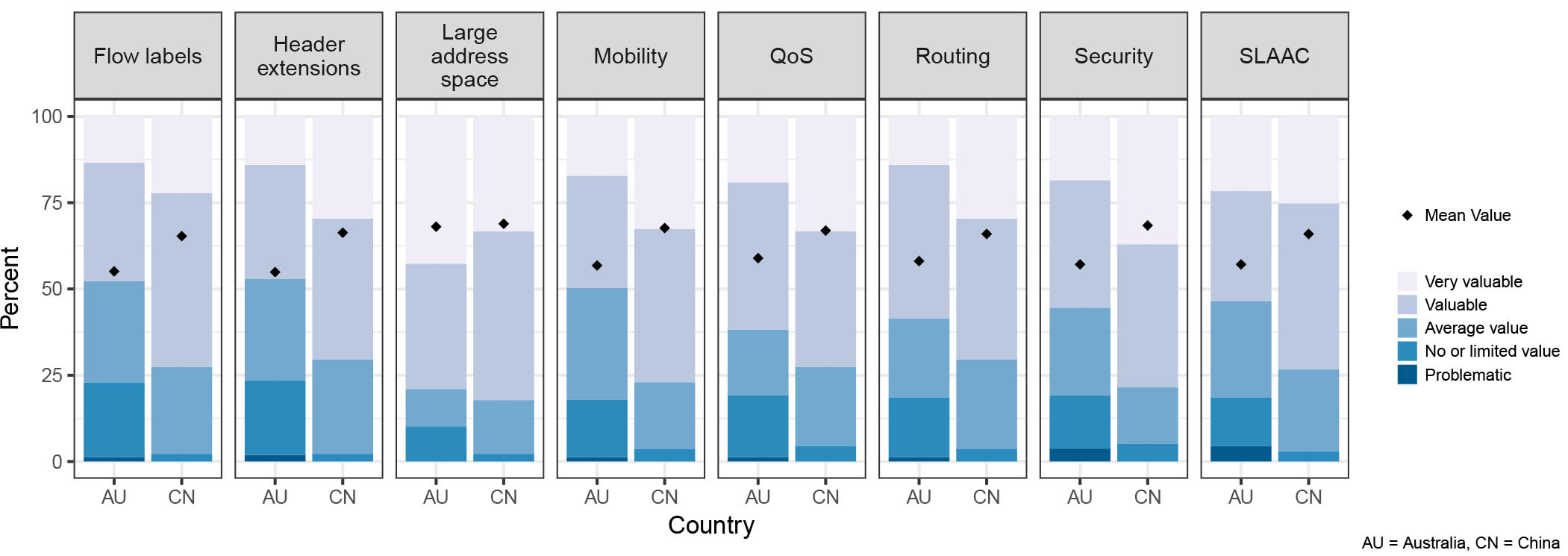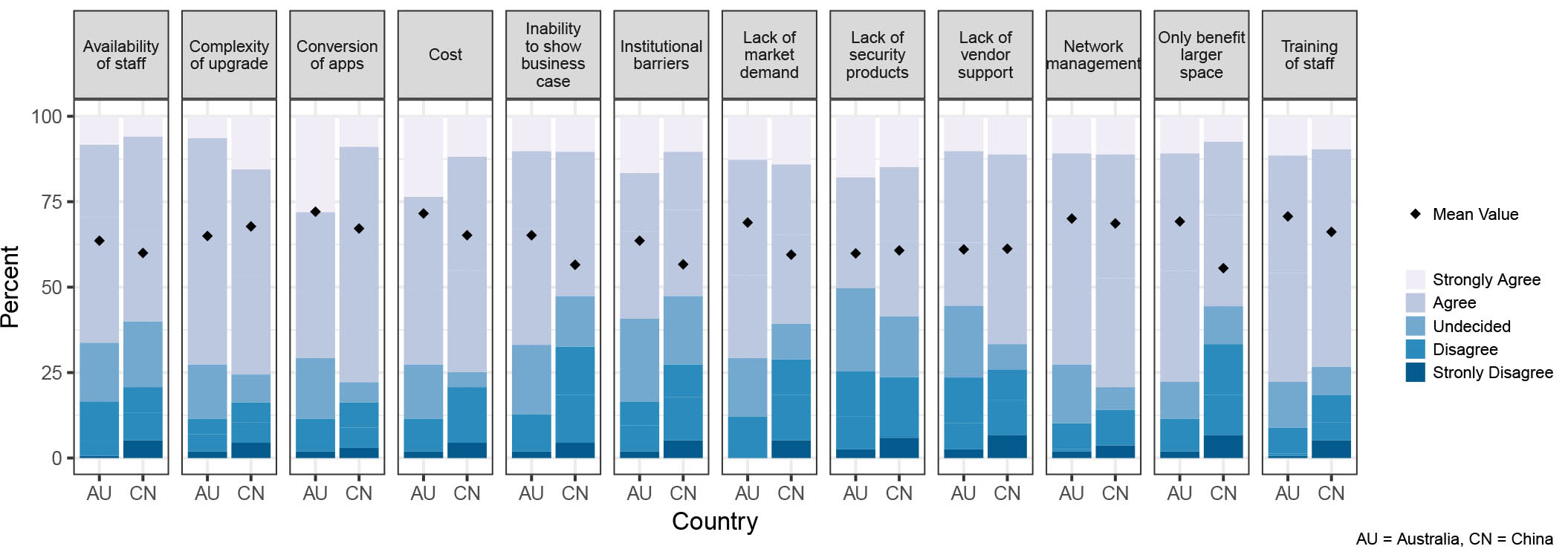Surveying the State of IPv6 Deployment in Australia and China
Motivation and obstacles
From the literature we know that a number of the new features IPv6 provides were seen as not very attractive. To confirm whether this is still the case, we asked all participants about the value of the new features. Figure 10 shows the results. The most valuable feature is clearly the “Large address space” (similar response in both countries). A number of other features are seen as average value or less by at least 50% of Australian organisations (“Security” and “SLAAC” are even viewed as problematic by some). However, all of these other features are viewed significantly more positively by Chinese organisations with only 30% or less ranking them as average value or less.

We also asked all participants, including those from organisations that have already deployed IPv6, what the main obstacles for IPv6 deployment are. Figure 11 shows the results. “Lack of security products”, “Lack of vendor support” and “Institutional Barriers” are seen as the smallest obstacles, while “Conversion of existing applications”, “Cost”, “Network Management” and “Training of Staff” are seen as the largest obstacles, especially in Australia. When comparing both countries, there are significant differences in the categories “Cost”, “Inability to show business case”, “Institutional barriers”, “Lack of demand” and “Only benefit is larger address space”. All of these are seen as smaller obstacles in China (consistent with higher demand in China and Figure 10 showing that various IPv6 features are perceived more positively in China).

Authors: Dr Sebastian Zander e-mail: S.Zander@murdoch.edu.au | Dr Xuequn (Alex) Wang e-mail: a.wang@murdoch.edu.au | web page by Rafael Da Costa
This project is supported by a grant from the Information Society Innovation Fund (ISIF Asia). This project is done in collaboration with APNIC Pty Ltd.